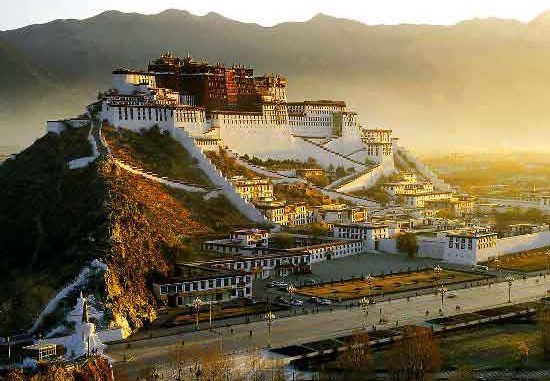
Xian attractions and regional tours? The Xian Muslim Quarters is just located behind ( north of ) the Drum Tower. The Xian Muslim quarters is a delightful place you will never miss! The famous Great Mosque is located in the Muslim Area. For the tourists coming here, the bazaar in the Muslim area is most attractive with a wide area of stalls selling everything. The streets and walkways are full of life. The shopping is great, very cheap and some unusual items we will seldom see anywhere else in China. The Great Mosque in Xian is one of the oldest, largest and best-preserved Islamic mosques in China.
As you might guess from the name, The Peak is the high point on Hong Island. And as you’d probably surmise, it offers the best views of the city – stretching from the skyscrapers and towers of the city centre to the mountains in the New Territories. It’s accessible by the Peak Tram, which passes the city’s buildings at a dizzying incline as it travels up to 1,300 feet above sea level. To get the best possible views at the top, we suggest you head to the viewing platforms at the anvil-shaped Peak Tower. Or if you fancy a hike, take a round around the 3.5km Peak Circle Walk, where you’ll get an astonishing bird’s-eye view of the metropolis below.
China is an awesome place if you are looking for ancient history mixed with modern attractions exploration. Another of China’s most recognizable historic structures is the magnificent Potala Palace in the town of Lhasa, Tibet. Constructed as a fortress and residence for the Dalai Lama, it was for centuries a center of political and religious power and contains many of the religion’s most important treasures. The first of the two Potala Palaces, the Red Palace, was built in the 17th century and contains the complex’s most important shrines in the Enthronement Hall, the walls of which are covered with murals depicting scenes from the lives of the Dalai Lamas and the Tibetan kings. Other highlights of the Red Palace are its many vast halls devoted to the religion’s teachings, and the elaborate tombs (known as “stupas”) of a number of Dalai Lamas. The equally impressive White Palace was completed in 1648 and includes the sleeping quarters, studies, and reception rooms, most untouched since 1959 when the Dalai Lama fled Tibet. While in Lhasa, be sure to visit the superb Jewel Gardens. Part of the Dalai Lama’s summer residence, these 90-acre gardens were first started in the 1840s and encompass everything from grand palaces and pavilions to pleasant lakes. Discover additional info at Chengdu to Xian tour.
Erected mostly in the early 20th century, the fortress towers at Kaiping were built by famously outbound Kaipingers, who brought home the many architectural styles they saw abroad, including Islamic, Roman and even ancient Greek. The towers were built as a display of wealth, and as a practical way of protecting locals from war and theft. Approximately 1,800 fortress towers still stand amid Kaiping’s vast rice fields. Kaiping is located 130 kilometers southwest of Guangzhou, the provincial capital of Guangdong. Regular buses are available between Kaiping Bus Terminal and various long-distance bus terminals in Guangzhou. Direct buses and ferries are available between Kaiping and Hong Kong.
The star attraction of China is the Great Wall, a spectacular defensive structure built to keep intruders from entering the mainland, which stretches from Jiayuguan Pass in the west, to Shanhaiguan Pass in the east, with a total length of 8851.8 km that traverses Liaoning, Hebei, Tianjin, Beijing, Inner Mongolian and Shanxi, Shaanxi, Ningxia, Gansu, etc. 9 provinces and municipalities. The steady stone fortification is a symbol of China, which was inscribed into the list of the World Cultural Heritage Site by UNESCO.
The Yungang Caves or Grottoes at Datong is one of the great examples of early Buddhist cave art. Here, monks carved more than 51,000 statues, ranging in size from several inches to tens of feet high into the hillside. Work on the carvings in the 252 grottoes took place in the fifth and sixth centuries. If possible, visitors recommend coming here in off-season when it is less crowded. One of the main reasons to visit Hangzhou, capital of Zhejiang Province, is to see West Lake, a large freshwater lake that is the symbol of this East China city. Forested man-made islands with temples and pagodas dot the lake, which is rarely deeper than five feet. West Lake, considered one of the most beautiful lakes in China, is divided into smaller lakes. It was once an imperial retreat. See additional details at China Travel Tours.
